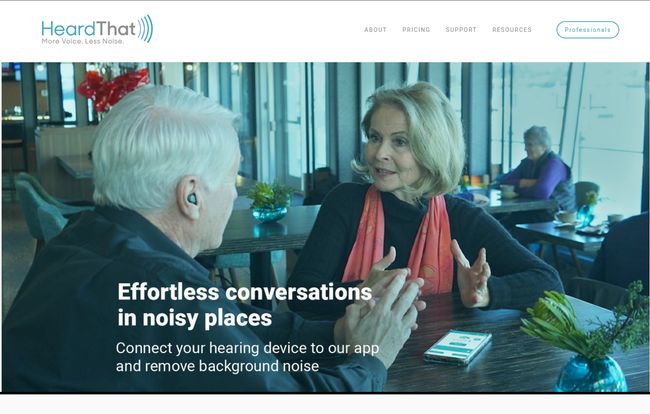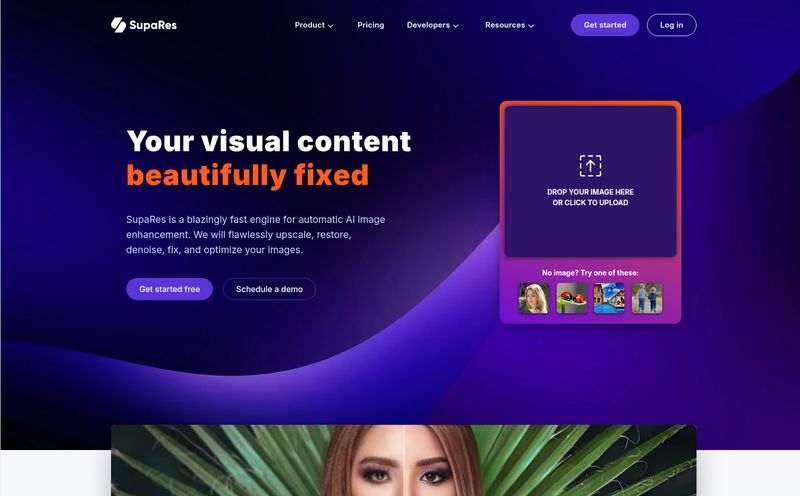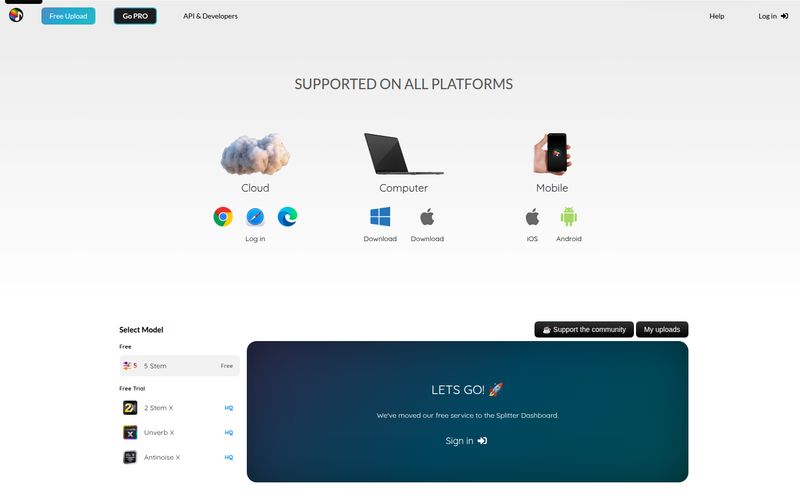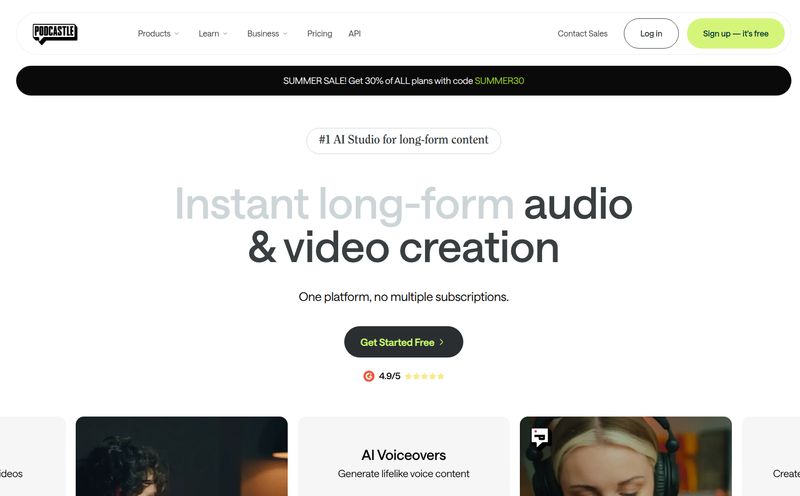Let’s paint a picture. You’re at your favorite restaurant. The one with the amazing pasta but terrible acoustics. The clatter of plates, the buzz of a dozen other conversations, the espresso machine screaming for its life in the background… and you’re trying to catch up with a friend. You’re nodding, smiling, but honestly? You’re only catching every third word. It’s exhausting. And a little isolating.
For years, the solution to this has been… well, complicated. Expensive hearing aids that sometimes just make the loud noises louder, or bulky assistive listening devices. As an SEO guy who's seen trends come and go, I'm always on the lookout for tech that solves a real human problem in a new way. And I think I’ve stumbled onto something interesting.
It’s an app called HeardThat. And its promise is simple: to turn your smartphone into a powerful hearing assistant. No new hardware needed. Just your phone, your favorite earbuds, and some seriously smart AI. But does it work? I had to find out.
So What Exactly is HeardThat?
In a nutshell, HeardThat is an app for your iPhone or Android device that uses artificial intelligence to separate speech from background noise. Think of it like a sound engineer living in your phone. Its one job is to listen to the chaos of a room, identify the human voices you want to hear, and turn down the volume on everything else. The clinking forks, the rumbling air conditioner, the chair scraping across the floor – it all gets pushed into the background.
The best part? It works with the gear you already own. Any Bluetooth headphones, earbuds, or even modern hearing aids with Bluetooth connectivity can be paired with it. This is a huge deal. It sidesteps the biggest barrier to entry for most hearing tech: the hefty price tag of specialized devices.

Visit HeardThat
Putting AI to the Test in a Noisy Coffee Shop
Theory is nice, but I live in the real world. So, I took HeardThat to my local crucible of noise: a bustling coffee shop during the lunchtime rush. The setup was shockingly simple. I downloaded the app, gave it the necessary permissions, and connected my everyday wireless earbuds. That’s it. No complicated calibration.
I sat down with a friend and fired up the app. At first, everything just sounded like it was coming through my earbuds. Then I found the magic slider. It’s a simple on-screen control that lets you adjust the level of noise reduction. As I moved it, something pretty incredible happened. The roar of the milk steamer and the chatter from the next table didn’t just get quieter, they seemed to… melt away. My friend's voice, however, remained clear and front-and-center. It was less like turning down the volume and more like applying a real-time Instagram filter for sound.
Was it perfect? Not quite. When a tray of dishes crashed nearby, the AI seemed to scramble for a second to figure out what was happening. But for the steady, ambient drone of a noisy public space, it was a genuine game-changer. It lowered my listening effort, and I found myself relaxing into the conversation instead of straining to keep up.
The Good Stuff and The Things to Consider
No tool is perfect, right? After playing with it for a while, here’s my honest take on the pros and cons.
What I Loved About HeardThat
The most obvious win is that it actually improves speech clarity in noise. It’s not just a gimmick. For anyone who dreads group dinners, this could be the difference between participating and just sitting there. The other massive advantage is the “use your own device” model. The fact that I didn't need to buy a single new piece of hardware is fantastic. And I've always felt that the best tech is the tech you already have. The free trial is also incredibly generous, giving you plenty of time to test it in your own life before committing a dime.
A Few Caveats to Keep in Mind
Now, let's be real. It's an app on your phone, so you need a smartphone to use it. That's a given for most, but not all. It also means you have to remember to use it—pulling out your phone and firing up an app before a conversation. Some might find that a bit of a faff. While it was great in the coffee shop, I suspect in extremely chaotic environments—like a loud concert or a construction site—it might struggle to find the signal in the noise. It’s a tool for conversations, not a miracle cure for all sound. And, of course, after the trial, it’s a subscription. We’ll get to that in a second.
Breaking Down the Cost: Is It Worth It?
So, what's this going to set you back? HeardThat has a pretty straightforward pricing structure, which I appreciate. No hidden fees or confusing tiers.
| Plan | Cost | Details |
|---|---|---|
| HeardThat Free | $0 | Includes a 30-day free trial of unlimited use. After that, you get 30 free minutes per week. |
| HeardThat Monthly | $9.99 / month | Unlimited usage. Billed monthly. |
| HeardThat Yearly | $99.99 / year | Unlimited usage. You get 12 months for the price of 10. |
My take? The value here is pretty subjective but potentially massive. Is $10 a month worth being able to confidently go out to dinner with family and friends? For many people grappling with the frustration of hearing loss, the answer is a resounding yes. It’s less than two fancy lattes for a month of clearer conversations.
Who Should Give HeardThat a Try?
This isn't just for people with diagnosed hearing loss. I see a few groups who could really benefit:
- People with mild hearing challenges who aren't ready for, or don’t need, traditional hearing aids.
- Anyone who gets overwhelmed or fatigued by noisy environments (sometimes called auditory overload).
- Hearing aid users who want an extra boost in particularly tricky situations, since it can work alongside many Bluetooth-enabled aids.
- Family members and friends. The app has a gifting feature, which is a thoughtful way to help a loved one feel more included without being pushy.
Frequently Asked Questions
Do I need to buy special headphones for HeardThat?
Nope! That's one of its biggest perks. You can use any Bluetooth-enabled listening device you already have, whether it’s a pair of AirPods, over-ear headphones, or even compatible hearing aids.
Does HeardThat replace my hearing aids?
Not necessarily. It's best to think of it as a specialized tool rather than a replacement. For many, it will work with their existing hearing aids to provide an extra layer of noise-filtering in challenging social settings. For those with milder difficulties, it might be all they need.
Is the AI always listening? What about my privacy?
This is a great question in today's world. The app only processes audio when you have it open and actively turned on. It’s not listening in the background when you're not using it. Like any app, it’s always smart to review their privacy policy, which is available on their website.
How much does HeardThat cost after the free trial?
After your 30-day unlimited free trial, you can either continue with a free plan that gives you 30 minutes per week or subscribe for unlimited use. The paid plans are $9.99 per month or a discounted $99.99 per year.
Can I try it on a real-world conversation before downloading?
Yes, actually! The HeardThat website has a cool interactive demo where you can listen to a recording of a noisy conversation and use a slider to hear the noise-canceling effect in real time. It's a great preview of what the app does.
My Final Thoughts on HeardThat
Look, the world is a noisy place. And technology that helps us connect with the people right in front of us is something I can always get behind. HeardThat isn’t a magic wand, but it is a seriously impressive and practical application of AI to solve a very real, very human problem.
It’s an accessible, affordable, and effective tool that puts the power back in your hands—or rather, your phone. If you've ever found yourself smiling and nodding while secretly having no idea what was just said, you owe it to yourself to use the free trial. You might be surprised at what you've been missing.
Reference and Sources
- HeardThat Official Website
- HeardThat Pricing Page
- Singular Hearing Inc. Privacy Policy
- Hearing Loss Association of America - Assistive Listening Systems



